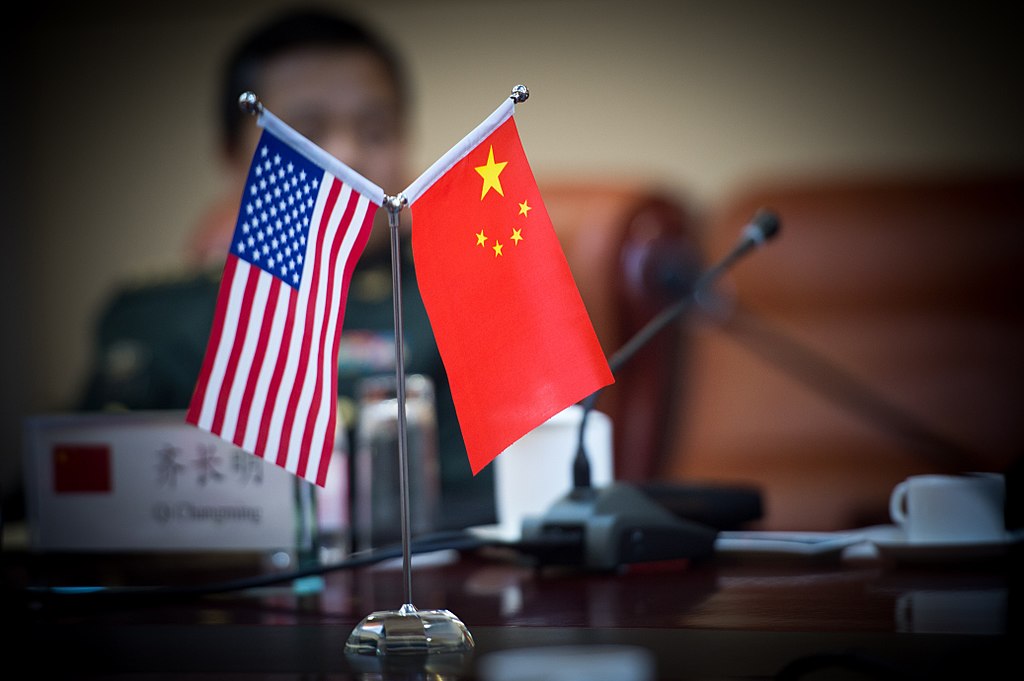China poses the top military and cyber threat to the U.S., according to the latest Annual Threat Assessment by American intelligence agencies. The report highlights Beijing’s growing capabilities to potentially seize Taiwan and disrupt U.S. interests using hypersonic weapons, stealth aircraft, nuclear expansion, and cyber warfare tools. It also warns of China's ambition to surpass the U.S. in artificial intelligence by 2030, with the PLA expected to use large language models for misinformation and cyberattacks.
Director of National Intelligence Tulsi Gabbard labeled China the "most capable strategic competitor," while CIA Director John Ratcliffe criticized China’s weak efforts to curb the export of fentanyl precursor chemicals, fueling the U.S. opioid crisis. In response, President Donald Trump has increased tariffs on Chinese imports by 20%, blaming Beijing for its inaction. China denies any responsibility and argues the U.S. must address its own drug abuse issues.
The report also identified Iran, Russia, and North Korea as key threats. Russia's invasion of Ukraine is providing Moscow with insights into combating Western military systems, while Iran continues to build missile and UAV capabilities and establish networks inside the U.S. Despite these moves, Tehran is not believed to be pursuing a nuclear weapon.
Beijing is also expanding its global reach, with the Arctic and Greenland flagged as strategic interests. China aims to secure natural resources and gain strategic advantage in the region. Meanwhile, U.S. Vice President JD Vance is set to visit Greenland, amid renewed U.S. interest in the territory.
Despite China's growing global ambitions, the report notes internal challenges, including corruption, demographic issues, and slowing economic growth, could undermine the Chinese Communist Party's stability and global agenda.



 Supporters Gather Ahead of Verdict in Jimmy Lai’s Landmark Hong Kong National Security Trial
Supporters Gather Ahead of Verdict in Jimmy Lai’s Landmark Hong Kong National Security Trial  Hong Kong Democratic Party Disbands After Member Vote Amid Security Crackdown
Hong Kong Democratic Party Disbands After Member Vote Amid Security Crackdown  Special Prosecutor Alleges Yoon Suk Yeol Sought North Korea Provocation to Justify Martial Law
Special Prosecutor Alleges Yoon Suk Yeol Sought North Korea Provocation to Justify Martial Law  Sydney Bondi Beach Shooting Sparks Calls for Stronger Protection of Jewish Community in Australia
Sydney Bondi Beach Shooting Sparks Calls for Stronger Protection of Jewish Community in Australia  Lukashenko Urges Swift Ukraine Peace Deal, Backs Trump’s Push for Rapid Resolution
Lukashenko Urges Swift Ukraine Peace Deal, Backs Trump’s Push for Rapid Resolution  Trump Administration Moves to Keep TransAlta Coal Plant Running Amid Rising AI Power Demand
Trump Administration Moves to Keep TransAlta Coal Plant Running Amid Rising AI Power Demand  Thousands Protest in Brazil Against Efforts to Reduce Jair Bolsonaro’s Prison Sentence
Thousands Protest in Brazil Against Efforts to Reduce Jair Bolsonaro’s Prison Sentence  U.S. Suspends UK Technology Deal Amid Trade Disputes Under Trump Administration
U.S. Suspends UK Technology Deal Amid Trade Disputes Under Trump Administration  Jimmy Lai Convicted Under Hong Kong National Security Law in Landmark Case
Jimmy Lai Convicted Under Hong Kong National Security Law in Landmark Case  Taiwan Political Standoff Deepens as President Lai Urges Parliament to Withdraw Disputed Laws
Taiwan Political Standoff Deepens as President Lai Urges Parliament to Withdraw Disputed Laws  Zelenskiy Urges Allies to Use Frozen Russian Assets as EU Summit Nears
Zelenskiy Urges Allies to Use Frozen Russian Assets as EU Summit Nears  Korea Zinc Plans $6.78 Billion U.S. Smelter Investment With Government Partnership
Korea Zinc Plans $6.78 Billion U.S. Smelter Investment With Government Partnership  U.S. Offers NATO-Style Security Guarantees to Ukraine as Peace Talks Show Progress
U.S. Offers NATO-Style Security Guarantees to Ukraine as Peace Talks Show Progress  Trump Sues BBC for Defamation Over Edited Capitol Riot Speech Clip
Trump Sues BBC for Defamation Over Edited Capitol Riot Speech Clip  Lukashenko Says Maduro Welcome in Belarus Amid Rising U.S.-Venezuela Tensions
Lukashenko Says Maduro Welcome in Belarus Amid Rising U.S.-Venezuela Tensions  European Leaders Tie Ukraine Territorial Decisions to Strong Security Guarantees
European Leaders Tie Ukraine Territorial Decisions to Strong Security Guarantees 































